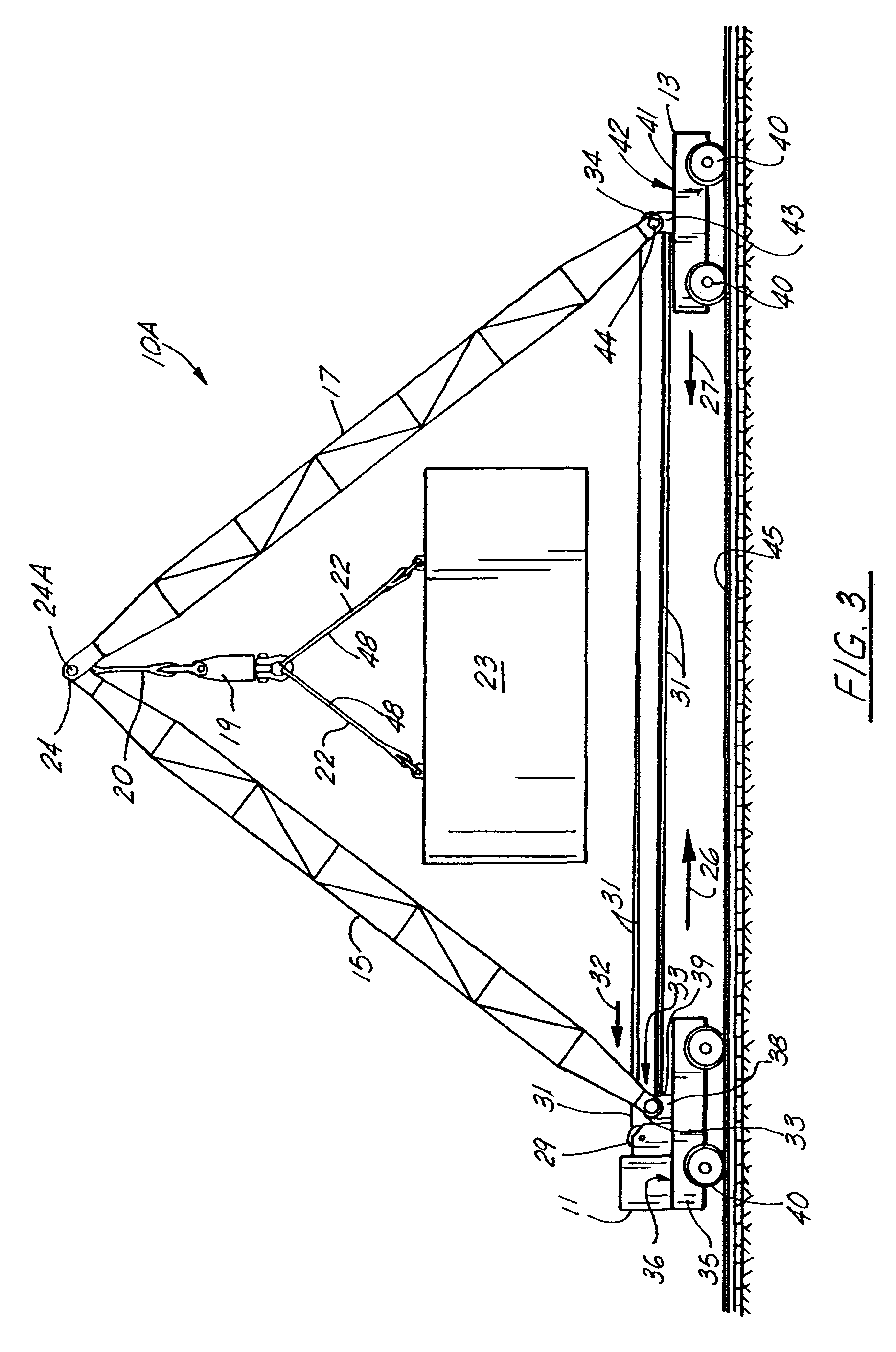Powered lifting apparatus using multiple booms
a technology of lifting apparatus and boom, which is applied in the direction of lifting equipment, load-engaging elements, prefabricated buildings, etc., can solve the problems of high cost of lifting very large objects such as chemical process vessels, large equipment, time-consuming and expensive operation, and reduce power requirements, costing the effect of transportation and assembly
- Summary
- Abstract
- Description
- Claims
- Application Information
AI Technical Summary
Benefits of technology
Problems solved by technology
Method used
Image
Examples
third embodiment
[0079]FIGS. 10–16 show the apparatus of the present invention designated generally by the numeral 10C in FIGS. 10, 11, 12, 13, and 14.
[0080]Lifting apparatus 10C is shown lifting a vessel 59 from a generally horizontal position as shown in FIG. 10 to the vertical position shown in FIG. 14. FIGS. 11, 12, and 13 show the vessel 59 in an inclined position as occurs during the lift.
[0081]As with the first and second embodiments of FIGS. 1–9, lifting apparatus 10C includes a plurality of carriages that support booms in an opposed and parallel relationship. As with the embodiments of FIGS. 1–9, a pair of booms are pinned and supported respectively by a pair of carriages. A second pair of carriages and respective booms is positioned next to and generally parallel to the first pair of carriages and booms. This arrangement can be seen in FIGS. 10–14 in the drawings.
[0082]A first pair of carriages 61, 62 are mounted upon supports such as rails 60 (see FIG. 15). The carriage 61 supports a boom...
sixth embodiment
[0101]In FIGS. 30–35, the apparatus of the present invention is shown, designated generally by the numeral 10E in FIGS. 30–33 and 35.
[0102]Each of the booms 107, 108 has a carriage 145 that includes an upper deck 146 that supports winch pedestal 171 (FIG. 34). Winch pedestal 171 supports winch 162 that has a winch cable 163. In the drawings, the boom 107 has a winch 162 with winch cable 163. The boom 108 has a winch 162 with a winch cable 164 (FIG. 31). The winch cables 163, 164 extend upwardly along each boom 107, 108 respectively as shown in FIG. 35 to a position just below lower brace 168. At the intersection of lower brace 168 and boom 107, a pulley 165 is provided through which cable 163 passes. Similarly, cable 164 extends from winch 162 upwardly along the length of boom 108 to a position next to lower brace 168 and is rigged to pulley 166. In FIG. 32, the winch cable 163 extends from pulley 165 diagonally to boom 106 and connects to cross brace 122. Similarly, cable 164 exten...
PUM
 Login to View More
Login to View More Abstract
Description
Claims
Application Information
 Login to View More
Login to View More - R&D
- Intellectual Property
- Life Sciences
- Materials
- Tech Scout
- Unparalleled Data Quality
- Higher Quality Content
- 60% Fewer Hallucinations
Browse by: Latest US Patents, China's latest patents, Technical Efficacy Thesaurus, Application Domain, Technology Topic, Popular Technical Reports.
© 2025 PatSnap. All rights reserved.Legal|Privacy policy|Modern Slavery Act Transparency Statement|Sitemap|About US| Contact US: help@patsnap.com



